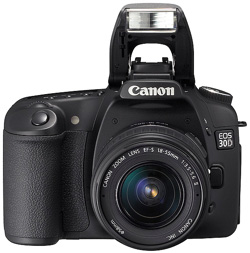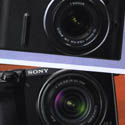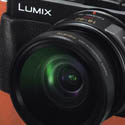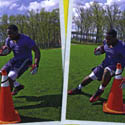iPhone4s Camera
By Mary H. K. Choi | June 12, 2012 | 6:00 am

iPhone 4 S (AT&T, VERIZON, SPRINT) If mega pixels were all that mattered, the 8-MP iPhone 4S would be merely an average camera, But when convenience and ease of use are factored in, it ranks as possibly the best ever.
The camera function is accessible directly from the lock screen-no code or even a second hand needed. All settings can be adjusted with one thumb, and the 35-mm (equivalent) f2.41ens, coupled with the back-illuminated image sensor, tops the low-light performance of a lot of point and shoots. -James Merithew
WIRED Set exposure and focus with just one tap. Automatic face recognition. Astonishingly great auto-white balance. TIRED No manual exposure control. Super-bright LED flash does more harm than good. $199 w/ two-year contract Eastman sold 150,000 Brownies in the first year. Within a decade nearly a third of Americans owned a camera, and even those who didn't could not avoid the "Kodak freaks" who toted their Brownies everywhere and traded snapshots for their scrapbooks.
The mania only intensified when Kodak introduced a folding pocket model that could print photos directly onto penny postcards. (More than 677 million postcards were mailed in 1907 alone.) By transforming how people engaged with photography, Eastman transformed how they engaged with one another. Shared experiences no longer had to be experienced together.
We're in the midst of another Brownie moment. Yes, we've had cell phone cameras for years. and they can't compete with DSLRs on f-stops and focal lengths. But, as with the Brownie, image quality is secondary to the social nexus. Always at hand, an iPhone camera is easy to use unobtrusively, and apps such as Instagram and Hipstamatic facilitate effortless sharing of images, automatically optimized as eye candy. Instagram in particular is on fire. The free app doubled its audience to 27 million users in the first three months of 20U, and that was before the Android version. And before it was purchased by Face book for a cool billion. Pre-Instagram, you could text a photo or email it from your smartphone and eventually post it on Flickr, but that all took effort. Instagram has made sharing compulsively easy.
Not only is Instagram a full-fledged social network-with users sharing and commenting on one another's images-but you can post on other networks like Twitter, where photos are becoming as important as text as a mode of communication. "Pictures are the quickest way to grasp information," says Wikimedia Foundation researcher and avid Instagrammer Parul Vora. "There's a reason our brains have evolved to be more than 30 percent visual cortex." The 17 preprogrammed Instagram filters are the secret sauce, cleverly designed to distract the eye from amateur compositional defects by exaggerating color saturation or introducing flare. "The human desire to get noticed is now very much connected to the technological capacity to make something noticeable," says Andrew Clarke, head of strategy at ad agency Butler, Shine, Stern & Partners, where he's currently orchestrating the US relaunch of Nokia Filters can make mediocre shots look good and good shots look great, which helps engage strangers.
More important, filters alter the mood, visually adding layers of meaning. (The '70s Instamatic color gamut exudes nostalgia -even for people born in 1993.) You're sharing not just what you see but also how you feel about it, a crucial element of visual communication previously accessible only to pros with pricey equipment.
On assignment in Afghanistan to document the troops' daily life, New York Times photographer Damon Winter observed the ubiquity of smartphone photography among the soldiers- so he chose to take pictures with Hipstamatic on his iPhone. Unencumbered by a DSLR. he was able to make social connections with the enlisted men and capture more casual, unguarded moments. His choice was validated when a series of these images was awarded third prize by Pictures of the Year International in February.
Hipstamatic was just a onetime tool for Winter. But the convenience of iPhonography has proven decisive for reporters like the Times' Ashley Parker, who supplements her writing on the presidential campaign by posting pies to Instagram. Through these channels, breaking news is folded into the social life of Instagrammers, adding to the communal experience shared at a distance-another upshot of George Eastman's vision.
His company ultimately lost that innovative streak. In 1975 a Kodak engineer named Steve Sasson built the world's first portable digital camera by cobbling together parts scavenged from a Super-S and a cassette player. Baffled colleagues asked, "Why would you want to look at photos on a TV?" A company that once led a visual revolution got stuck in the status quo and today stands for nostalgia: An app developer called Taplayer now offers a filter that makes digital pies look like they were shot with a Brownie









